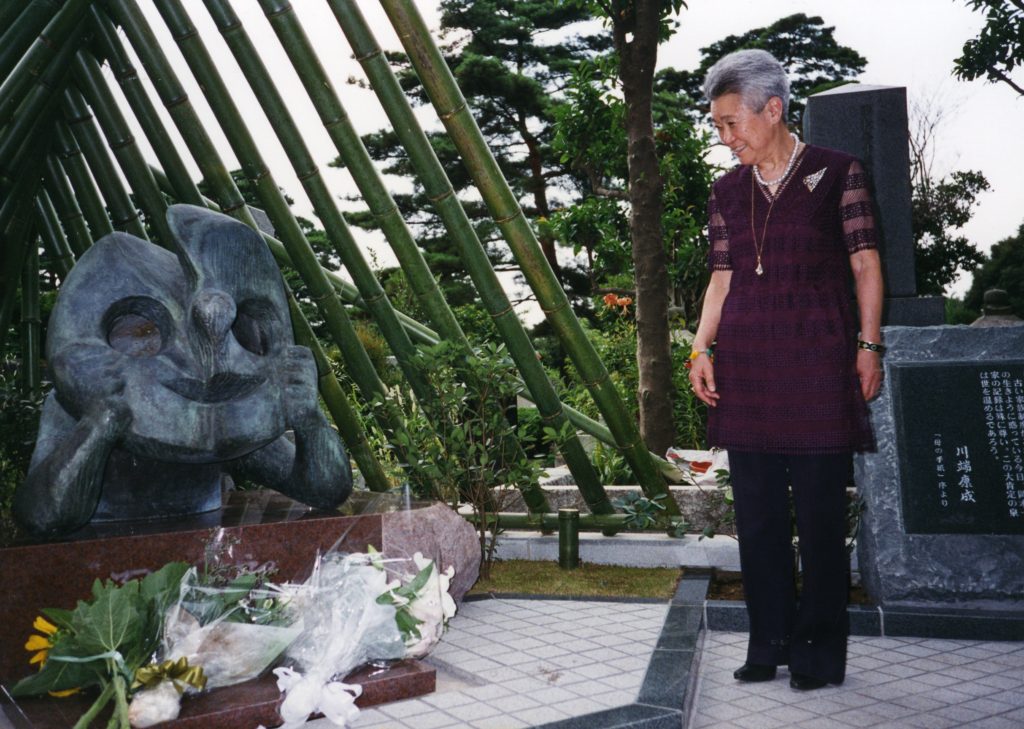Taro Okamoto is alive
May 7, 1998. The building in Minami-Aoyama that served Taro Okamoto as both home and studio for forty-two years is opened to the public as the ‘Taro Okamoto Memorial Museum’. The original building, which was designed by the architect, Junzo Sakakura was left untouched, but the two-story, wooden library/sculpture studio adjoining it was rebuilt to create a public museum run as an incorporated foundation. This was only two years after Taro’s death and the driving force behind its creation was Toshiko Okamoto’s passion to ‘pass on a knowledge of Taro Okamoto to the next generation.’

Taro Okamoto’s tombstone is “若い夢” chosen by Toshiko without a second thought. (at the Tama Cemetery)
This Aoyama studio was where all Taro Okamoto works were created for forty-two years, from 1954 to 1996, and it also served as the battle station from which he carried out his remarkable artistic activism. In accordance with his last wishes, it has been reborn as a base for the promotion of contemporary art while simultaneously commemorating the life of Taro Okamoto. It was here that he died on January 7, 1996. His creativity continued right up to the end, with him working on a large monument and dictating the manuscript for a new book. It was in this studio that he gave birth to the ‘Tower of the Sun’ and a huge number of other works, covering a wide range of genres as he continued to challenge the art world. Its walls still echo with his enthusiastic voice, they hold his breath and the sound of his footsteps, even his perspiration, filling the space as if he still lived.
Taro’s physical body may be gone, but this space continues to overflow with his vitality. I hope people will visit here, regardless of whether or not they are interested in art, to come into contact with his passion and be given new life. Although it is small, I am sure that he wanted the energy of the people who gather here to enliven the Taro Okamoto Memorial Museum and turn it into a place from which to transmit his vitality. As somebody who worked with him for fifty years, nothing would please me more than for it to become a place where people can converse directly with his enthusiasm and his pure, manly spirit. I want this museum to operate in the same way as he would have done if he were still alive. We want it to be an open place where Taro Okamoto serves as a nucleus, allowing the people who gather together to find mutual inspiration, to appreciate each other while simultaneously discovering themselves, more clearly, more deeply, more extensively. As we take the first step towards this dream that Taro was unable to realize in his lifetime, we would like to ask everybody who has a keen interest in his way of living and his love of art for their cooperation and support.

(Left) Let’s all play with Taro (Right) The Maiden named “乙女” in the garden of the museum



